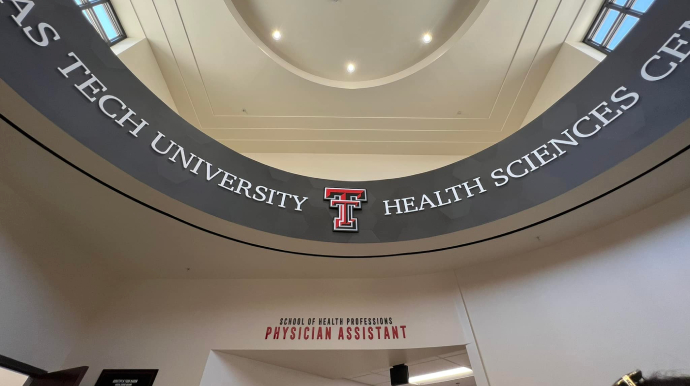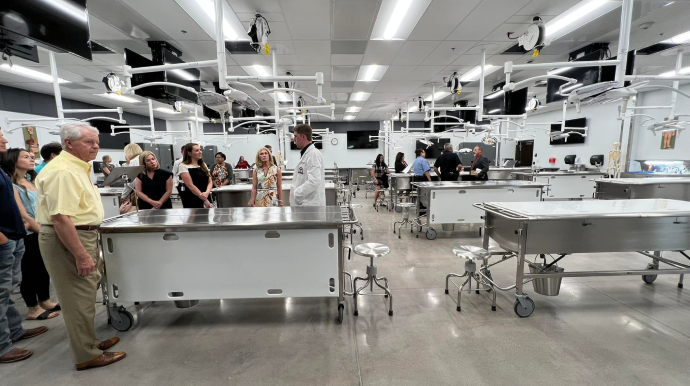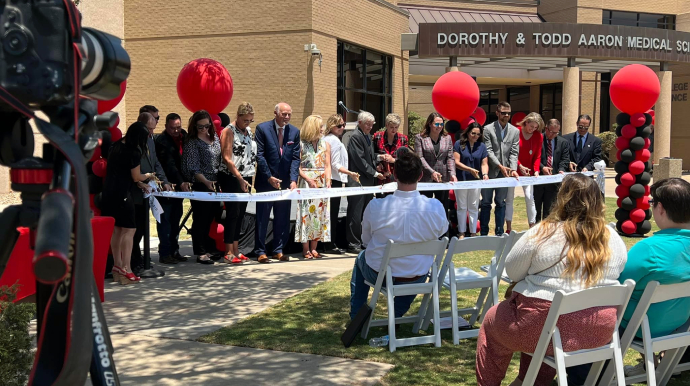The Texas Tech University Health Sciences Center Physician Assistant Program: A critical contribution to healthcare

13 Jun 2022
News
With the demand for health care professionals increasing, physician assistants (PAs) are in demand now more than ever. PAs are medical professionals who diagnose illness, develop and manage treatment plans, prescribe medications, and may serve as a patient’s principal health care provider.
On 16th May 2022 guests and dignitaries cut the ribbon for the recently completed Texas Tech University Health Sciences Center Physician Assistant building on the Midland College campus. The 32,500 square-foot facility will include an anatomy lab, clinical classrooms, and training facilities. The labs will be available for nursing students as well as health care professionals throughout the Permian Basin. The newly designed facility will create an opportunity to transform the teaching and research environments of health care through innovation and collaboration. The expansion will allow PA class size to increase from 60 to 72 students in the next three years.
The TTUHSC PA Program - Meeting the challenges of high-quality healthcare
Christina Robohm-Leavitt, Midland regional dean for TTUHSC School of Health Professions and director of the Physician Assistant Studies Program, stated, “ The TTUHSC Master of Physician Assistant Studies Program is committed to educating PAs to meet the challenge of increasing access to and providing high-quality, patient-centered health care for communities in West Texas and beyond. With a focus on primary care and family medicine, the program awards a Master of Physician Assistant Studies degree following 27 months of intensive academic and clinical training. The 15-month academic phase of the program is conducted in a dedicated, state-of-the-art facility in Midland, Texas, a thriving community located between Fort Worth and El Paso. The 12-month clinical experience takes place at a variety of sites throughout West Texas.”
The PA Program: Benefiting the community
 When asked how the PA Program was intended to benefit the community, Leavitt said, “Evidence shows PAs can improve access to care for underserved patients. PAs can work in every clinical setting, with almost 40% working in hospitals and 18% working in surgical specialties. When working at the top of their license, PAs can help improve patient flow, reduce physician stress, and help improve clinical outcomes for patients and communities.”
When asked how the PA Program was intended to benefit the community, Leavitt said, “Evidence shows PAs can improve access to care for underserved patients. PAs can work in every clinical setting, with almost 40% working in hospitals and 18% working in surgical specialties. When working at the top of their license, PAs can help improve patient flow, reduce physician stress, and help improve clinical outcomes for patients and communities.”
According to Leavitt, here are some of the ways PAs benefit the community and healthcare systems:
- Drive down costs: Annual compensation for a PA is usually half or less of a physician and PAs can provide care in areas of critical physician shortages as well as rural and small hospitals.
- Treat high-acuity patients: PAs are highly educated and trained and can work collaboratively with physician colleagues to perform tasks specific to the needs of patients in primary care, emergency medicine, and surgical specialties
- Support value-based care: PAs can address patients’ healthcare needs in different care environments to ensure they receive high-quality care.
- Take on leadership roles in healthcare and clinical initiatives: PAs are increasingly involved in leadership roles in hospitals, clinics, and academia, launching initiatives with everything from telehealth to systematizing other processes to ensure high quality care.
- Economic impact: It is estimated that one rural PA can have an employment effect of 4.4 local jobs for a clinic and a community with a hospital, and 18.5 local jobs.
Making a vital contribution to the PA Program: Midland Development Corporation
Midland Development Corporation provided financial support to the venture, donating $5 million for the expansion.
 According to Leavitt, the financial support from MDC helped provide additional infrastructure for the program to update the facilities and teaching resources needed, while providing an opportunity for hands-on learning.
According to Leavitt, the financial support from MDC helped provide additional infrastructure for the program to update the facilities and teaching resources needed, while providing an opportunity for hands-on learning.
“The expanded building will allow for the expansion of 12 additional students per year, for a total of 72. The PA program is highly structured and intense to prepare graduates for the practice of medicine. With anatomy as a cornerstone of medical education, the addition of a cadaver gross anatomy lab allows the program to have improved anatomy education without transporting students to the Lubbock campus various times through the summer and didactic year,” she said. She went on to add, “The additional education resources of simulation and task models, clinical laboratory space, and a standardized patient laboratory provide the opportunity for hands-on application of the knowledge they learn in lectures. And, with a focus on building skills for wellness and protection from burnout, leisure spaces have been designed to refresh, study, and socialize during the intensive 27-month program.”
More Topics


Texas’s Export Trade Up 49% In March 2022
Jun 10 2022

